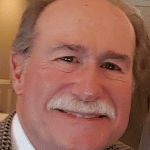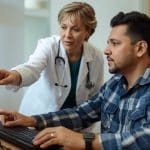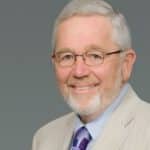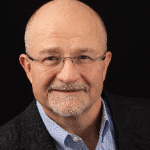Why have rare diseases been so disproportionally represented in the world of internet-based online medical communities since the early 90s? Is there a unique reason to explain why so many of the rare disease patients understood long before anyone else the importance of the wisdom of crowds. Could it just be explained by the long tail in medicine?
I believe that faced with the tyranny of Pareto’s Principle these patients instead got empowered by the Paradox of Rarity.
Pareto’s Principle, also known as the 80/20 rule, guides most of the current medical system as well as the work designed to change and improve the healthcare system. That leaves all those suffering from unusual and complex diseases out in the cold, almost obligated to become e-patients (equipped, enabled, empowered, engaged, equals, emancipated and experts) if they want to optimize their chances to survive the disease.
Pareto’s Principle notes that, for many events, 80% of the effects come from 20% of the causes. It applies to many situations, in all industries, from software to health.
One of the applications of the 80/20 rule in health care is that “20% of patients in a defined population account for 80% of the work and may incur 80% of the costs”. Ted Eytan confirmed that “this data is pretty easy to confirm because it’s based on health care claims, and it is repeated again and again.”
Let’s take diabetes. It is not only common and serious; it is also a very costly disease. It has become an epidemic that affects one out of every 12 adult in the US. Since 1994, the number of people who have diabetes has more than doubled, and it is likely that number will double again by the year 2050.
The cost of treating diabetes is staggering. According to the American Diabetes Association, the annual cost of diabetes in medical expenses and lost productivity rose from $98 billion in 1997 to $132 billion in 2002 to $174 billion in 2007.
One out of every five U.S. federal health care dollars is spent treating people with diabetes. The average yearly health care costs for a person without diabetes is $2,560; for a person with diabetes, that figure soars to $11,744.
Much of the human and financial costs can be avoided with proven diabetes prevention and management steps. A further use of the 80/20 rule helps explain why 20% of the diabetes patients, many of them “Frequent Users”, are responsible for 80% of the costs associated with its treatment.
Pareto’s Principle also applies to the general population. 20% of the patients suffering from chronic diseases (hypertension, diabetes, vascular diseases or mental illness are incurring 80% of the costs.
This tyranny of Pareto’s Principle in healthcare leaves very little room for anyone suffering from a rare disease (defined as any disease considered to have a prevalence of fewer than 200,000 affected individuals in the United States). It is worth noting that most cancers, including all cancers affecting children, are rare diseases.
With a growing financial crisis, an extremely high rate of inflation in healthcare costs and shrinking funds why would any healthcare system administrator spend any money on a small group of patients when they have learned and tested the fact that 20% of their work produces 80% of their results. Indeed, it seems very logical to spend instead on the large chronic diseases where changing the outcome of the 20% most expensive patients can make such a drastic change. Similarly why would any primary care physician ever learn to diagnose leiomyosarcoma if they are unlikely to ever see a single case, while they see diabetes patients all the time. It is no surprise you end with a large segment of the population suffering usually from serious and usually growing health problems, unable to get a diagnosis for months or years. Anyone suffering from any of these disorders will find out in time the plain and UNIVERSAL sad truth: there are very few true expert clinicians able to diagnose AND treat these disorders. The hospitals usually do not know how to deal with these patients and are almost never able to put in place the team of physicians necessary to provide optimal care, unless they have on-board one of the true experts who knows what are all the necessary sub-specialties to optimize care.
Most of the ACOR online communities are focused on one type of cancer, usually a rare type. Let’s mention just a few of them: testicular cancer, renal cell carcinoma, GIST, carcinoid, ovarian cancer, multiple myeloma or leiomyosarcoma. Not surprisingly the archives of the ACOR system are an incredible accumulation of the painful stories of patients misdiagnosed for months or years and then unable to receive satisfactory treatments upon diagnosis. Many of these communities were started in the mid-90s, long before anybody ever uttered the 2 words “social network”. Close to 15 years later some of these communities have close to 3,000 members reading the daily exchanges that typically fall squarely in Pareto’s Principle: 20% of the members are responsible for 80% of the content!
But wait a second! The Office of Rare Disorders speaks of 6,000 rare diseases. Eurordis, the great European organization, mentions about 7,000 such diseases. ORD speaks of 1 American in 10 suffering from a rare disorder, while Eurordis mentions between 6 & 8% of the European population. The numbers are staggering. As Eurordis says:
“despite the rarity of each rare disease, it is always surprising for the public to discover that according to a well-accepted estimation, about 30 million people have a rare disease in the 25 EU countries. This figure is equivalent to the combined populations of the Netherlands, Belgium and Luxembourg”.
While these diseases are rare, rare diseases patients are many. It is therefore “not unusual to have a rare disease”. This paradox of rarity explains why ACOR has served over 1/2 million people since it started! Does it remind you of Chris Anderson’s Long Tail? No wonder that we are seeing lately questions such as “Can We Crowdsource Medical Expertise?”
But why did we build so many communities for rare cancers? There are at least 150 rare cancers, probably many times this amount as we learn to differentiate better small mutations and their consequences, further classifying diseases in smaller and smaller groups. For most of these individual diseases, there were/are few or no treatment or cure and there was/is often little or no ongoing research. In the 90s there was no centralized system to look for clinical trials. Before PubMed became easily accessible, there were no easy source of scientific information related to these diseases. The individuals affected by these rare diseases often were very disheartened. Still today it appears that most federally funded institutions are not concerned by these patients. You still have a large population of people not served well by their healthcare system. In 1995 it was already apparent that many of the early users of the limited medical online communities were asking about unusual symptoms and asking about rare diseases. An independent witness to these early exchanges could easily spot the great need to create disease specific communities to help all those suffering from a rare cancer by being warmly welcome by others shouting this seminal phrase: “Sorry to see you here, but glad you found us. YOU ARE NOT ALONE!”
As soon as people discover an online community for their disease, they understand the power of organization and they often talk of developing an advocacy organization offering workshops, fundraising, information and tissue banks, finally providing hope that advances in research will be made in the not too distant future. The most successful communities/organizations are even talking or controlling the research agenda and to be in the driver seat, funding the next clinical trials based on the priorities their members have decided.
Early in the development of ACOR I noticed how many of the groups we launched resulted in the creation of advocacy organizations for their disease. This was clearly the first effort ever to organize around a disease and the energy it generated was always palpable. Group after group the same story repeated itself. First no one could believe how powerful they had instantly become just by having broken the feeling of isolation. I surmise that very, very few doctors have ever thought of the medical impact of feeling isolated but I can assure you (Dave, can you confirm?) that even though feeling part of a strong community may or may not alter your ultimate survival, it does have a very profound impact on your Quality of Life!
When the groups reached hundreds of subscribers they started talking about organizing and within a year or two an advocacy organization grew up of these initial conversations. More often than not, within an additional couple of years, you had both an additional advocacy organization and an additional online community for the same disease. Too many strong personalities and too many people who just “know how to make it work better”. Nonetheless all these organizations and the online communities have profoundly transformed the patients experience. And they continue to do so, constantly able to bring in the next level of help.
For example, the main role of the ACOR medical communities, to provide access to the validated information regarding the disease and ALL its available treatments, has to be in constant flux. While in the early 90’s it was usually fulfilled by helping people find rare information, today’s activities have evolved into providing high quality filters to help members navigate through the glut of available material, written or multi-media.
Most people, before they join such a group, will complain of the internet as a source of too much information of unequal quality and hard to assess. But as Jon Lebkowsky wrote earlier: ‘the community and its members, through history of interaction, form reputation – you have an idea how “smart” they are about their subject of focus.’ Or as Samantha Scamaliero summed it up MANY years ago:
“List members-layfolk and professionals alike-have moved beyond the old, obsolete mindset that holds that only certain ‘qualified’ medical professionals may create and disseminate medical information. We layfolk are learning that we are qualified through our experience, our knowledge and our concern. We now see that we are capable of contributions no professional can make and that by linking our efforts [with those of professionals] in a coordinated team, we can advance the well-being of all.”






As the listowner of several ACOR pediatric cancer (read: rare cancer) lists, I especially appreciate: “Sorry to see you here, but glad you found us. YOU ARE NOT ALONE!” In the over-ten-year period that I have participated in these lists, I have seen time and time again: A new parent joins and starts out being tentative and shy and holding little knowledge about their child’s disease, but within a few months that same member is helping new members with aplomb. The knowledgeable parents of the lists have helped other parents find the best treatments, or, they have helped them be assured that the treatment their child is receiving is appropriate. That improves quality of life.
Thank you, Gilles, for these important observations.
Since I know a bit about your story, I can provide people a bit of context, but please correct/add to it. In a nutshell: your wife was diagnosed with breast cancer, you were both dissatisfied with the doctor’s treatment plan, you went online to find out more information, you found online communities that provided valuable help but who were not archiving their conversations, you created ACOR.org to do so.
You have written about the importance of simple technology like email listserves and the “national treasure” that is PubMed. What are the other tools and developments that have proved to be indispensable to the medical communities you have fostered and observed? What are your “desert island” e-patient resources? (That’s a question for anyone, btw, not just Gilles — if you had a serious diagnosis, what could you not live without in your fight against it?)
As a co-listowner of the ACOR ovarian cancer list, I can bear witness to the power of the women who have ovca, the caregivers, the family and friends who gain strength, hope and knowledge through our collective voice.
No longer isolated, there is a sense of community…acceptance….and lots of love.
Another milepost article from Gilles. Wise, well researched, erudite author.
Presuming we update e-Patients: How they can help us heal healthcare, I think this article should be the heart of a new chapter titled “It is not unusual to have a rare disease.” That’s such an eye-opener.
(For those who don’t know, I’m a beneficiary of ACOR’s kidney cancer [RCC] list, and the wisdom that’s accumulated there. What Gilles says is real.)
Excellent post, Gilles. We all have to wear many hats, from patient, to advocate, to expert. For the past 12 years of managing the esophageal cancer group on ACOR, I can attest to all of the points you have clearly presented. I especially concur with the evolution from seeking rare information to providing experience driven filtering.
Thank you!
— Marc
Having had an uncommon presentation of a ‘common’ cancer, and the grieving the loss of many bone marrow transplant patients/friends at my hospital, I felt very much alone before I found bmt-talk, now part of the ACOR community.
Now, as a survivor, ACOR has made me the best advocate for my own health that I could possibly be. Cancer survivors aren’t rare, but until recently, the late effects that the treatments have caused us have not been taken seriously.
“You are not alone” is a powerful phrase. I may not owe my life to ACOR (yet), but I certainly owe my quality of life. Thanks, Gilles.
I am always humbled by stories about search for a diagnosis. It’s probably the strongest theme in our rare disease community. For a vivid example of what people with Isaac’s Syndrome have dealt with, see this thread:
http://www.inspire.com/groups/rare-disease/discussion/isaacs-syndrome/
There is nothing more sincere than the search for a diagnosis, and for treatment that works. If anyone has a doubt about the ability of patients and caregivers to help one another and connect through e-mail and the web, they should have a look. Those with rare diseases become their own experts. They gain extensive, valuable information. Unfortunately, on the Long Tail of disease, their searches are often lonely.
Thanks, Brian, for pointing us to that discussion — I was able to add the HTML link to make it easier for folks to navigate to it.
May I ask your opinion about the use of a Web-based forum vs. the use of other community apps? It seems that this group might benefit from the data tracking functionality available on a site like PatientsLikeMe. But I also see some discussion of being “new to this” and therefore they may feel most comfortable with a threaded discussion. If so, do you think some people might “graduate” to a different application once they get over the diagnosis and discussion phase?
Hi Gylles,
Thanks for the post, and most importantly for your work! One of the things I am most thankful for in my training was that I happened to go to a medical school where Andrew Weil, MD was on faculty, and he spent time teaching us about the things that allopathic physicians (that’s us) DIDN’T treat well at all. I remember his quote, “In 20 years we will look back at what we did to cancer patients and be aghast.” He reminded us to carry ourselves with humility and keep our minds open to different ways of healing.
There wasn’t an ACOR around then, but if it was, surely we would have been drawn to it as a complement to everything we would doing to help society.
It is wonderful that people can find people just like them, regardless of the issue. Rare or common, the need is no less important. A country doctor in 1967 was observed to do this (from “A Fortunate Man“)
“.he is acknowledged as a good doctor because he meets the deep but unformulated expectation of the sick for a sense of fraternity…”
Now, luckily, this doesn’t have to be in the hands of physicians, thanks to you and people like you. Let’s add this to the curriculum, then – a course about the thousands and hundreds of thousands of people who will help you be a better doctor when you graduate…
Susannah,
Rather than a step-function or ‘graduation’, we see a a continuum of participation. At one end are people who start by reading about what others are going through. They may begin on the web, and then sign up to receive email updates. Over time, some people become more engaged, asking questions and responding to others. A subset of those people then go on to create a profile, sharing information about themselves. A number of our members have asked for even more detailed ways to share personal information, creating a deep personal profile and comparing their own specific medical results with others. We’re building those features right now.
Key to the process, from everything we’ve learned, is understanding that people change over time, and their initial reaction to diagnosis (this applies to caregivers just as much as patients) evolves. There are a couple crucial elements to helping people through the stages: first, ensuring they are safe, and privacy is a large part of that. Second, insisting they are able to control the use of their personal information and their role in the community; and third, providing moderators and support to help people navigate the new environment. The average age of our members is 55, and we know that this is the first social network many of them have experienced.
So, that’s a rather long answer, but i just want to convey that there’s a lifecycle to member participation, as these online spaces become a serious part of people’s lives and they make very real friends and develop deep trust-based relationships.